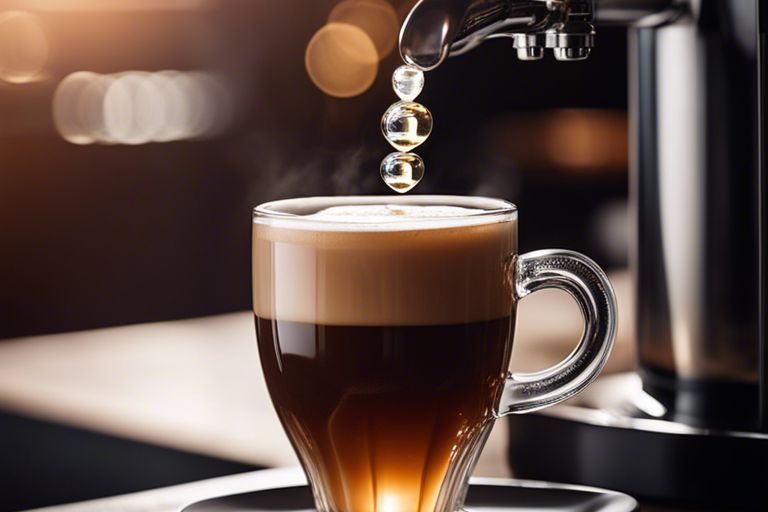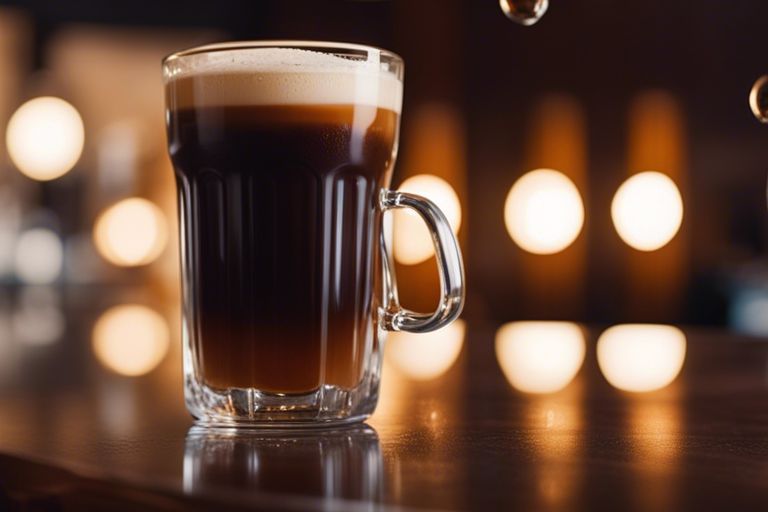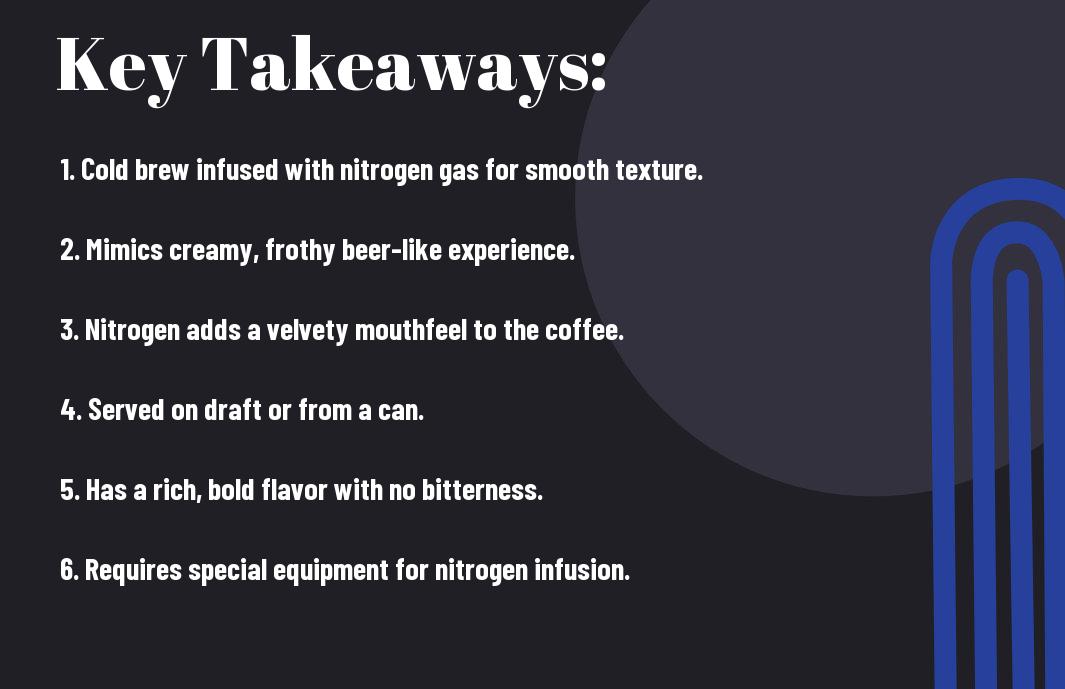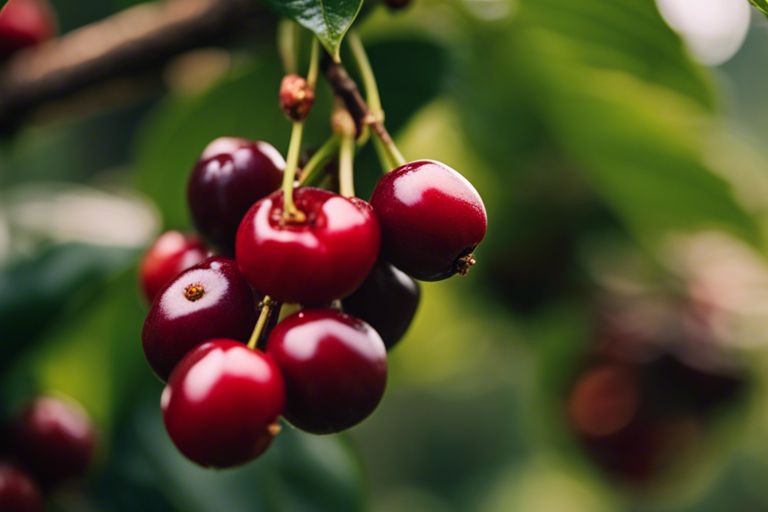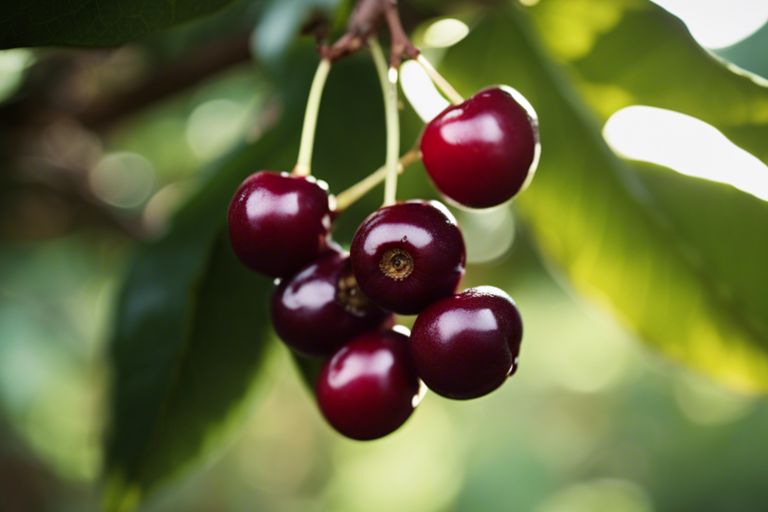Drink up, coffee lovers! Today, we’re venturing into the delightful world of making a caramel macchiato right in the comfort of your own kitchen. This delicious espresso-based beverage, layered with velvety milk and sweet caramel drizzle, is sure to elevate your mornings. So, grab your favorite mug and let’s get started on crafting the perfect caramel macchiato to kickstart your day with a touch of indulgence.
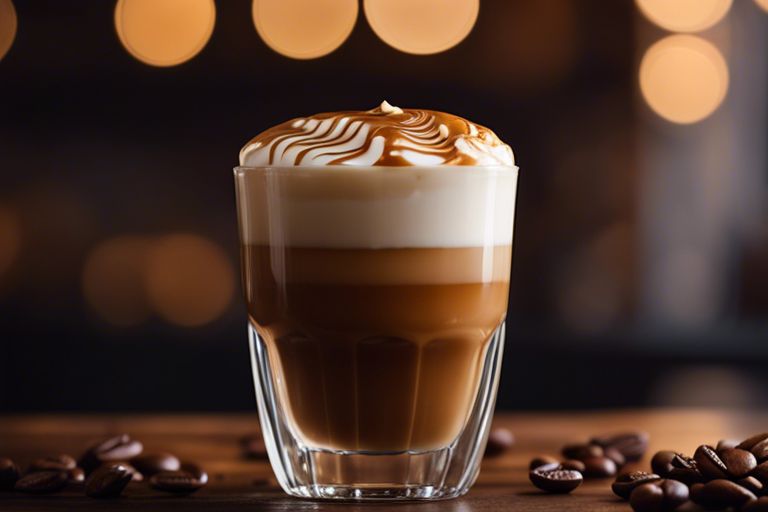
Key Takeaways:
- Start with the espresso: Brew a strong shot of espresso as the base of the caramel macchiato.
- Layer the milk: Steam and froth the milk, then slowly pour it over the espresso to create the signature layered effect.
- Drizzle with caramel: Finish off the caramel macchiato by drizzling caramel sauce on top for a sweet and indulgent touch.
Gathering Ingredients
Essential Coffee Beans
To create a delicious caramel macchiato, you will need quality espresso coffee beans. Look for a medium-dark roast with a rich and bold flavor profile. These beans will serve as the base for your macchiato, providing a strong and aromatic coffee essence.
Rich Caramel Syrup
For the perfect caramel macchiato, you’ll need a high-quality caramel syrup. This syrup brings a sweet and decadent flavor that complements the bitter notes of the espresso beautifully. Choose a syrup that is rich and thick, as it will create a delicious caramel drizzle on top of your drink.
With the right caramel syrup, you can achieve the signature layered look of a caramel macchiato, with the perfect balance of sweetness and coffee intensity.
Steamed Milk Perfection
Ingredients like whole milk or your preferred alternative will make a creamy and velvety addition to your caramel macchiato. The steamed milk forms the middle layer of the drink, providing a smooth texture and mellowing out the boldness of the espresso and sweetness of the caramel syrup.
To achieve the ideal steamed milk consistency, it is crucial to froth the milk just right. This will create the perfect microfoam that blends effortlessly with the other components of your caramel macchiato, resulting in a heavenly and indulgent beverage.
Preparing the Espresso
Pulling the Perfect Shot
Some say that the secret to a delicious caramel macchiato lies in pulling the perfect shot of espresso. To achieve this, you’ll need to pay close attention to every detail of the brewing process. Start by ensuring that your espresso machine is properly heated and that your coffee grounds are fresh and finely ground. Tamp the grounds evenly and firmly into the portafilter before locking it into place.
Adjusting Grind and Tamping
To further enhance the flavor of your espresso shot, it’s crucial to adjust the grind size of your coffee beans and the tamping pressure. The grind size can affect the extraction time and the overall taste of your espresso. Experiment with different grind sizes until you find the perfect balance for a rich and flavorful shot. When tamping, apply consistent pressure to compact the grounds evenly, which helps ensure even extraction.
The right combination of grind size and tamping pressure will result in a well-balanced shot of espresso with a beautiful crema on top. Recall, practice makes perfect, so don’t be afraid to adjust and fine-tune your technique until you achieve the desired results.
Creating the Caramel Sauce
Not all caramel sauces are created equal, and making your own from scratch will take your caramel macchiato to the next level. The process may seem intimidating, but fear not – I will walk you through the steps to achieve that perfect balance of sweetness and richness in your homemade caramel sauce.
Melting Sugar and Butter
Creating a caramel sauce starts with melting sugar and butter together in a saucepan over medium heat. Be sure to stir constantly to prevent the sugar from burning. As the mixture heats up, the sugar will start to caramelize, giving your sauce its signature deep flavor and amber color. It’s important to keep a close eye on the sauce as it can go from golden brown to burnt very quickly.
Achieving the Perfect Caramel Color
Achieving the perfect caramel color is crucial for a delicious caramel sauce. The color is an indicator of the flavor intensity – the darker the color, the richer the caramel flavor. To achieve a deep caramel hue, allow the sugar to caramelize until it reaches a dark amber color. This will give your caramel macchiato a complex and indulgent taste that complements the smooth espresso perfectly.
Avoid the temptation to rush the caramelization process by turning up the heat too high. Patience is key when making caramel sauce, as slow and steady heating will help you achieve that beautiful deep caramel color without burning the sugar.
Steaming the Milk
Despite the seemingly complex process, steaming milk for a caramel macchiato is a truly rewarding and enjoyable experience. This step plays a crucial role in creating the rich and creamy texture that elevates the overall taste of the drink.
Heating to the Right Temperature
| Equipment: | Thermometer |
| Any | successful barista will tell you that heating the milk to the right temperature is key to achieving that perfect creamy texture. Too cold, and the milk won’t froth properly; too hot, and it can scald, leading to a less desirable flavor. |
Creating Silky Microfoam
One of the secrets to achieving that velvety microfoam is in the technique. Gently position the steam wand just below the surface of the milk and create a whirlpool effect by swirling the milk pitcher. This method helps evenly distribute the foam throughout the milk, resulting in a smooth texture that perfectly complements the espresso in your caramel macchiato.
Heating the milk to the correct temperature while simultaneously incorporating air through steam is the key to creating that luxurious microfoam that sits atop your caramel macchiato. Practice and patience are imperative here, but the results are well worth the effort.
Assembling the Macchiato
Combining Espresso and Caramel Sauce
Now, with your freshly brewed espresso shot ready and your caramel sauce prepared, it’s time to bring these two necessary components together to create the base of your caramel macchiato. Start by adding a generous amount of caramel sauce to the bottom of your coffee cup or glass. Next, carefully pour your rich and bold espresso shot over the caramel sauce, allowing the flavors to meld together to create a delectable foundation for your macchiato.
Adding Steamed Milk to Perfection
The key to achieving the velvety texture and creamy finish of a caramel macchiato lies in the art of steaming milk. The steamed milk not only adds a luxurious and indulgent quality to the drink but also balances out the intense flavors of the espresso and caramel. The
The temperature and consistency of the steamed milk are crucial in achieving the perfect caramel macchiato. The milk should be steamed to a silky microfoam texture, creating a smooth and creamy base that complements the bold espresso and sweet caramel flavors. Take your time to steam the milk just right, paying attention to the sound and movement of the milk as you texture it to perfection.
Assembling
Assembling all the components of a caramel macchiato is a delightful process that culminates in a truly decadent and satisfying coffee creation. Carefully pour the steamed milk over the espresso and caramel sauce mixture, using a gentle and steady hand to create distinct layers in your macchiato. The final touch? A drizzle of additional caramel sauce on top to add a touch of sweetness and visual appeal to your masterpiece. Now, take a moment to admire your handiwork before taking your first luxurious sip of this homemade caramel macchiato.
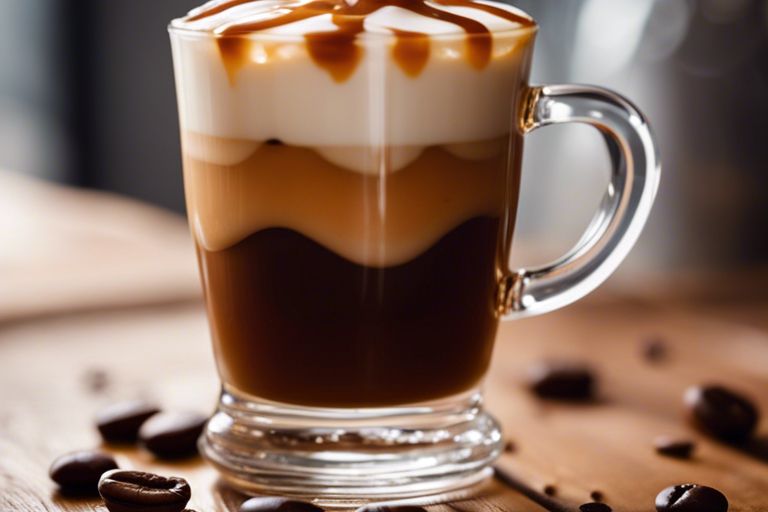
Customizing Your Macchiato
After mastering the basic recipe for a delicious caramel macchiato, it’s time to get creative and customize your drink to suit your taste preferences. There are several ways you can make your macchiato even more indulgent and flavorful by adding some extra toppings and twists.
Whipped Cream and Caramel Drizzle
Caramel lovers rejoice! For an extra decadent treat, top off your caramel macchiato with a generous dollop of whipped cream and a drizzle of caramel sauce. The combination of creamy whipped cream and sweet caramel adds a luxurious touch to your beverage, making it a perfect dessert-like drink to enjoy any time of day.
Sprinkling Sea Salt or Cocoa Powder
Caramel and sea salt or cocoa are a match made in heaven. Sprinkling a pinch of sea salt or cocoa powder on top of your caramel macchiato can enhance the flavors and add a subtle hint of complexity to the drink. The contrast of salty or chocolatey notes with the sweet caramel creates a harmonious balance that will elevate your macchiato to a whole new level of deliciousness.
Any true gourmand knows that the smallest details can make a big difference in the overall taste experience. When adding sea salt or cocoa powder to your caramel macchiato, make sure to start with a small amount and adjust according to your preference. A little sprinkle can go a long way in enhancing the flavors without overpowering the drink.
Whipped Cream and Chocolate Shavings
Whipped cream and chocolate shavings are a delightful addition to a caramel macchiato that can transform it into a luxurious dessert in a cup. The velvety whipped cream adds a creamy texture, while the chocolate shavings provide a rich and decadent flavor that pairs beautifully with the caramel notes of the drink. Indulge yourself with this extra touch of indulgence and treat yourself to a truly decadent caramel macchiato experience.
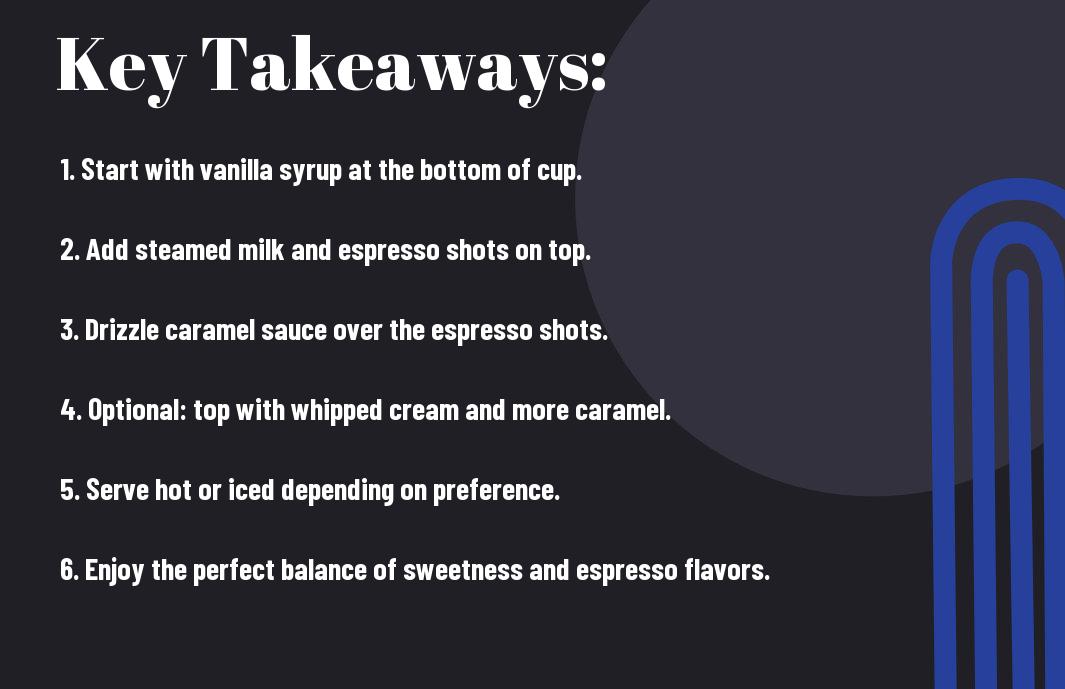
Summing up
With this in mind, making a caramel macchiato at home is a delightful experience that allows you to customize your drink to suit your taste preferences perfectly. By following these simple steps and adding your personal touch, you can create a delicious caramel macchiato that rivals your favorite coffee shop’s version. So why not grab your ingredients and embrace your inner barista today?
FAQ
Q: What ingredients do I need to make a caramel macchiato?
A: To make a caramel macchiato, you will need espresso, milk, vanilla syrup, caramel sauce, and whipped cream.
Q: How do I brew the espresso for a caramel macchiato?
A: Brew a strong shot of espresso using an espresso machine or a stovetop espresso maker.
Q: How do I froth the milk for a caramel macchiato?
A: Froth and steam the milk using a milk frother or by heating the milk and using a whisk to create foam.
Q: How do I assemble a caramel macchiato?
A: Start by adding vanilla syrup to the bottom of your cup, pour in the frothed milk, then slowly pour in the espresso. Top with whipped cream and drizzle with caramel sauce.
Q: Can I customize my caramel macchiato?
A: Yes, feel free to adjust the sweetness by adding more or less vanilla syrup and caramel sauce. You can also try using different types of milk for a unique flavor profile.
What are the best coffee regions in the world






